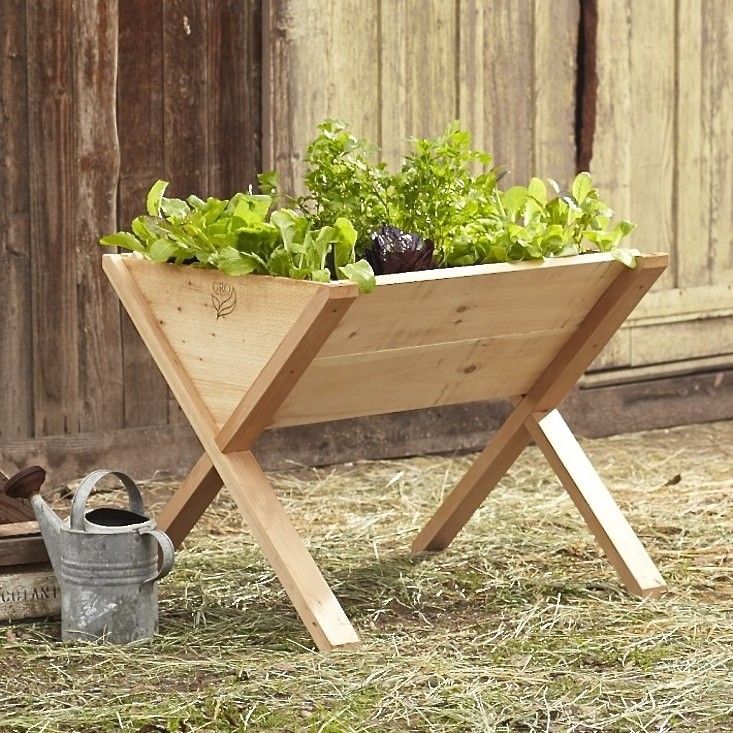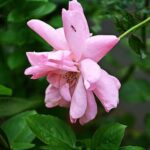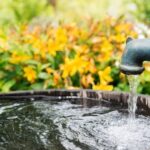Are you considering adding a touch of tropical flair to your North Carolina landscape? Incorporating palm trees into your outdoor space can create a stunning and unique aesthetic, while also offering various benefits.
In this article, we will explore the appeal of integrating palm trees into landscaping in North Carolina, as well as provide practical tips and ideas for achieving an attractive and thriving palm tree landscape. Whether you’re a seasoned gardener or new to landscaping, this guide will help you understand the advantages and considerations of incorporating palm trees into your NC outdoor space.
When it comes to landscaping in North Carolina, palm trees can offer a refreshing change from traditional native plants and trees. Their graceful fronds, interesting trunk textures, and iconic silhouette make them stand out in any setting. But beyond their visual appeal, palm trees also provide practical benefits such as shade, wind protection, and added privacy. Additionally, certain varieties are well-suited to the state’s climate and soil conditions, making them relatively low-maintenance once established.
In the following sections of this article, we will delve into the different aspects of incorporating palm trees into landscaping in North Carolina. From choosing the right varieties that thrive in NC’s climate to planning and designing their placement within your outdoor space, we’ll provide comprehensive guidance for creating a successful palm tree landscape.
Whether you’re aiming for a coastal-inspired oasis or simply want to add an exotic touch to your backyard, the following tips and suggestions will help you achieve an impressive result.
Choosing the Right Palm Tree Varieties
When considering palm tree landscaping ideas in North Carolina, it’s crucial to choose the right palm tree varieties that can thrive in the state’s specific climate and soil conditions. Fortunately, there are several types of palm trees that are well-suited for North Carolina’s environment, adding a touch of tropical beauty to the landscape.
One popular variety is the Sabal Palmetto, also known as the “cabbage palmetto,” which is the state tree of South Carolina and is commonly found in coastal areas of NC.
Another excellent choice is the Windmill Palm, known for its cold hardiness and ability to withstand lower temperatures. Additionally, the Needle Palm, which is native to the southeastern United States, including parts of North Carolina, is a great option for landscaping due to its resilience.
Incorporating these palm tree varieties into your landscaping in North Carolina can create a visually stunning and exotic aesthetic while also providing practical benefits. For example, certain palm trees are known for their ability to withstand high winds and heavy rain, making them an ideal choice for coastal regions where tropical storms and hurricanes are common.
Moreover, many palm tree species are drought-tolerant once established, which can be advantageous during periods of low rainfall or water restrictions. To ensure success with your palm tree landscaping project, it’s essential to select varieties that are well-adapted to North Carolina’s unique climate and soil characteristics.
The key to successful palm tree landscaping in North Carolina lies in choosing varieties that are well-suited to the region’s climate and soil conditions. By carefully selecting the right palm tree species for your landscaping project, you can create an inviting outdoor space with a touch of tropical elegance while ensuring that your palms will thrive and flourish for years to come.
| Palm Tree Variety | Climatic Suitability |
|---|---|
| Sabal Palmetto (Cabbage Palmetto) | Coastal areas; salt-tolerant; heat-resistant |
| Windmill Palm | Cold hardy; tolerates lower temperatures |
| Needle Palm | Drought-tolerant; resilient; suitable for southeastern US |
Planning and Designing
When incorporating palm trees into landscaping in North Carolina, careful planning and designing are crucial to ensure a cohesive and visually appealing outdoor space. Here are some tips for effectively integrating palm trees into the overall landscaping design:
- Consider the placement: When placing palm trees in your landscape, take into consideration their space requirements as well as their impact on sunlight and shading. Create focal points by strategically placing them around your property or use them to line pathways for a dramatic effect.
- Think about spacing: Different varieties of palm trees have varying mature heights and spreads, so it’s important to consider spacing when planting them. Be mindful of how much space each variety will need to thrive and grow without overcrowding or competing with other plants.
- Pay attention to aesthetics: Palm trees can add a tropical, exotic ambiance to your landscape. Consider how their unique shapes, textures, and colors can complement the overall look and feel of your outdoor space. Integrate them into the design in a way that enhances the beauty of your surroundings.
Incorporating palm trees into your landscaping in North Carolina can transform your outdoor environment into a lush, tropical paradise. By carefully planning the placement, spacing, and overall aesthetics of these majestic trees, you can create a stunning and harmonious landscape that reflects the natural beauty of the region while evoking a sense of relaxation and tranquility.
By considering these key factors when incorporating palm trees into your landscaping designs, you can create an inviting outdoor oasis that captures the essence of tropical living while thriving in North Carolina’s climate and soil conditions.
Soil Preparation and Maintenance
Soil Preparation
Before planting palm trees in North Carolina, it is important to prepare the soil to ensure proper growth and health. One of the key factors to consider is the pH level of the soil, as palm trees thrive in well-draining soil with a slightly acidic pH level. Testing the soil and amending it with organic matter or sulfur if necessary can help create an optimal environment for palm tree growth.
Fertilization and Nutrient Management
Once the soil has been prepared, it is important to provide proper nutrients for the palm trees. Fertilizing palm trees in NC with a balanced slow-release fertilizer can be beneficial, especially during the growing season. It is important to follow the recommended dosage and application instructions to avoid over-fertilization, which can harm the trees.
Managing Soil Moisture
In North Carolina, where climate and rainfall patterns can vary, it is essential to manage soil moisture to ensure that palm trees receive adequate water without becoming waterlogged. Proper irrigation methods such as drip irrigation or soaker hoses can help deliver water directly to the root zone while minimizing evaporation and runoff. Mulching around the base of palm trees can also help retain soil moisture and regulate temperature fluctuations.
By following these guidelines for soil preparation and maintenance, NC residents can ensure that their palm tree landscaping ideas come to fruition with healthy and thriving trees.
Companion Planting
When it comes to landscaping with palm trees in North Carolina, choosing the right companion plants and flowers can significantly enhance the overall aesthetic appeal of the outdoor space. By selecting vegetation that complements palm trees and thrives in the same climate and soil conditions, you can create a harmonious and visually striking landscape.
Native Plants
One effective approach to companion planting alongside palm trees is to incorporate native plants that are well-suited to North Carolina’s climate. Species such as azaleas, rhododendrons, and dogwoods not only thrive in the state’s environment but also provide a beautiful contrast to the tropical appearance of palm trees. Additionally, incorporating local flora can contribute to a more sustainable landscaping design.
Contrasting Foliage and Texture
Incorporating plants and flowers with contrasting foliage and texture can create visual interest within the landscaping. For instance, species with large, broad leaves or vibrant blooms can provide an attractive contrast to the slender fronds of palm trees. Consider adding ornamental grasses, ferns, or flowering shrubs to introduce variety and add depth to the overall design.
Drought-Tolerant Options
Given North Carolina’s climate patterns, selecting plants that are drought-tolerant can ensure their resilience during dry periods. Succulents, such as agave or yucca, are a great choice for companion planting with palm trees, as they require minimal watering and thrive in similar conditions. This approach not only ensures sustainable landscaping practices but also minimizes maintenance efforts for overall convenience.
By thoughtful consideration of companion planting options when incorporating palm trees into your North Carolina landscaping design, you can create a cohesive and visually appealing outdoor space that enhances the natural beauty of your property.
Watering and Irrigation
When it comes to landscaping with palm trees in North Carolina, proper watering and irrigation are essential for the health and growth of these tropical plants. Due to the unique climate and typical rainfall patterns of NC, it’s important to follow best practices to ensure that palm trees thrive in their new environment.
To guide you through the process, here are some best practices for watering palm trees in North Carolina:
1. Understand Soil Moisture Levels: Before watering your palm trees, it’s crucial to understand the moisture levels of the soil. Use a moisture meter to determine if the soil is dry, moist, or saturated. This will help you gauge when it’s time to water your palm trees.
2. Opt for Deep Watering: When irrigating palm trees, aim for deep watering rather than frequent shallow watering. Deep watering encourages the development of a strong root system as the water seeps down to lower levels of the soil, promoting stability and resilience in various weather conditions.
3. Consider Drip Irrigation Systems: In North Carolina’s climate, where temperatures can fluctuate throughout the year, installing a drip irrigation system can be an efficient way to provide consistent moisture to palm trees while minimizing water waste. These systems deliver water directly to the roots of plants, ensuring efficient hydration without excessive runoff.
By following these best practices for watering and irrigation, you can support the healthy growth and development of palm trees in your North Carolina landscape and maintain their lush appearance throughout the seasons. Don’t forget to keep an eye on local rainfall patterns and adjust your watering schedule accordingly to provide just the right amount of moisture for your palm trees’ needs.
📌Keywords: nc palm tree landscaping ideas 📌
Landscaping Accessories
Landscaping with palm trees in North Carolina offers an opportunity to create a tropical oasis in a region where the climate may not traditionally support such landscaping. One way to enhance the aesthetic appeal of palm tree landscaping is by incorporating hardscape elements into the design. Rocks, boulders, and pathways can complement the palm trees and add visual interest to the overall landscape.
When considering hardscape elements for palm tree landscaping in NC, it’s important to select materials that not only complement the natural beauty of the palms but also withstand the local climate. For example, using rocks and boulders that are indigenous to North Carolina can tie the landscape together and ensure that the design feels cohesive.
Pathways can serve both functional and aesthetic purposes when incorporated into palm tree landscaping. Well-designed pathways can guide visitors through the garden while creating focal points and adding dimension to the space. In addition, carefully placed pathways can help protect sensitive root systems as they prevent foot traffic from compacting soil around palm trees.
Incorporating hardscape elements into palm tree landscaping in NC requires thoughtful planning and consideration of both aesthetics and functionality. By selecting materials that complement the natural beauty of palm trees, such as rocks, boulders, and pathways, homeowners and landscapers can create visually stunning outdoor spaces that evoke a sense of tranquility and escape right in their own backyard.
| Hardscape Element | Considerations |
|---|---|
| Rocks | Select indigenous rocks for cohesion with NC’s landscape; consider size and color for visual impact. |
| Boulders | Choose boulders that complement palm trees; consider placement for dimension and texture. |
| Pathways | Select pathway materials that blend with the surrounding environment; consider layout for function and aesthetics. |
Maintenance and Pruning
In conclusion, incorporating palm trees into your landscaping in North Carolina can bring a tropical and exotic feel to your outdoor space while also providing various benefits such as shade, aesthetic appeal, and a unique focal point. However, to ensure the success of your NC palm tree landscaping ideas, it is essential to carefully select the right palm tree varieties that thrive in the state’s climate and soil conditions.
By choosing the appropriate types of palm trees, you can set the foundation for a successful landscaping project that will enhance the overall beauty of your property.
Once you have selected the suitable palm tree varieties for your North Carolina landscaping, proper planning and designing are crucial for their successful integration into your outdoor space. Consider factors such as placement, spacing, aesthetics, and companion planting to create a harmonious and visually appealing landscape that incorporates palm trees seamlessly.
Additionally, paying attention to soil preparation and maintenance, watering and irrigation practices, as well as maintenance and pruning techniques are all essential for ensuring the health and longevity of your palm trees.
Furthermore, including complementary landscaping accessories such as rocks, boulders, pathways or other hardscape elements can elevate the beauty of your palm tree landscaping while providing practical functionality. By following these tips for maintaining the health and appearance of your North Carolina palm trees through proper pruning and pest control strategies, you can enjoy a vibrant and thriving outdoor space that reflects the unique charm of palm tree landscaping in NC.
With careful planning and diligent care, your palm tree landscaping ideas can flourish into a stunning addition to your property for years to come.
Frequently Asked Questions
Will a Palm Tree Survive in North Carolina?
Palm trees can survive in North Carolina, but the specific variety of palm and its care requirements will determine its success. Some cold-hardy palm species such as the Windmill Palm or the Needle Palm can withstand the lower temperatures in North Carolina. Proper protection and maintenance during harsh winters are essential for their survival.
What Plants Look Good Around Palm Trees?
When choosing plants to complement palm trees, it’s important to consider the overall aesthetic and climate conditions. Tropical plants like bird of paradise, elephant ear, or bromeliads can create a lush and exotic feel around palm trees.
In addition, low-growing ground covers like liriope or mondo grass can add texture to the landscape without competing with the palm tree for nutrients and space.
What Is the Best Ground Cover for Palm Trees?
The best ground cover for palm trees includes options that are low-maintenance, drought-tolerant, and will not compete with the tree’s root system for nutrients. Ground covers like mulch, gravel, or river rocks are good choices as they help retain moisture in the soil while providing a clean and neat appearance around the base of the palm tree.
Additionally, ornamental grasses or low-growing succulents can be suitable ground cover options to complement palm trees in landscaping.

Welcome to my gardening blog! I am passionate about plants and enjoy sharing my knowledge and experiences with others. In this blog, I will write about everything related to gardening, from tips on how to get started to updates on my own garden projects.





